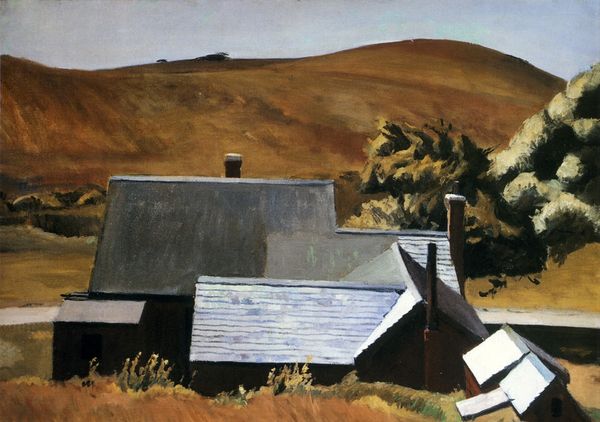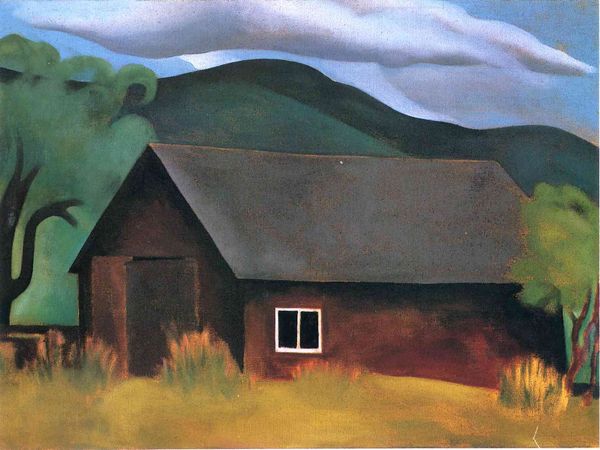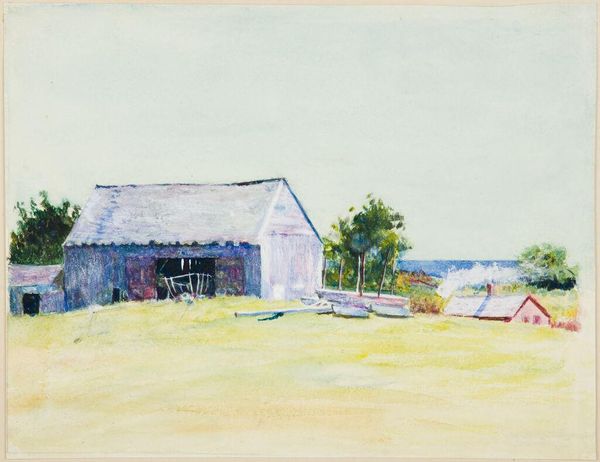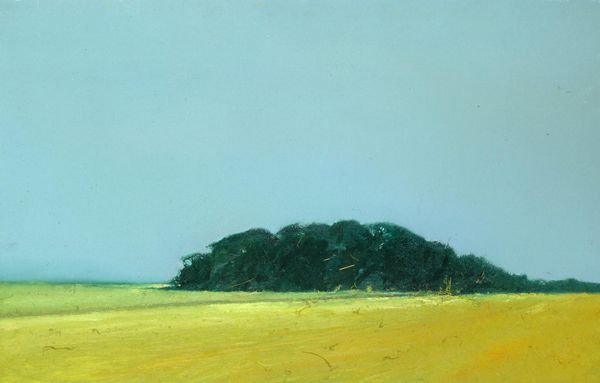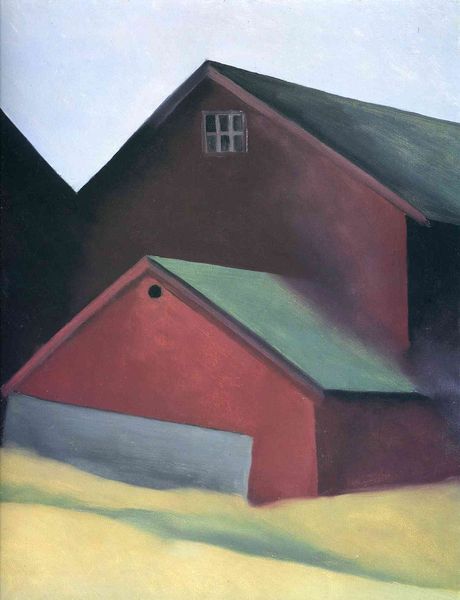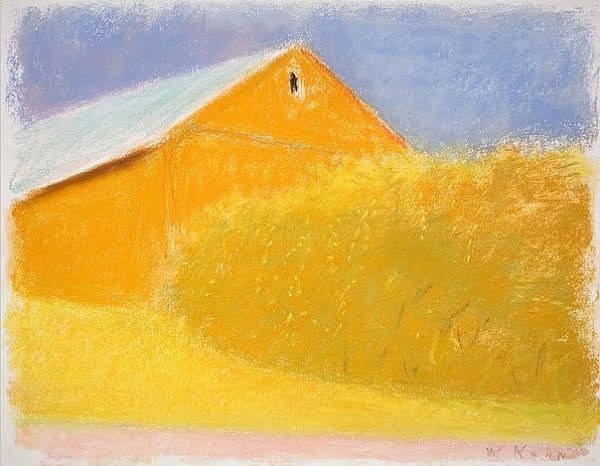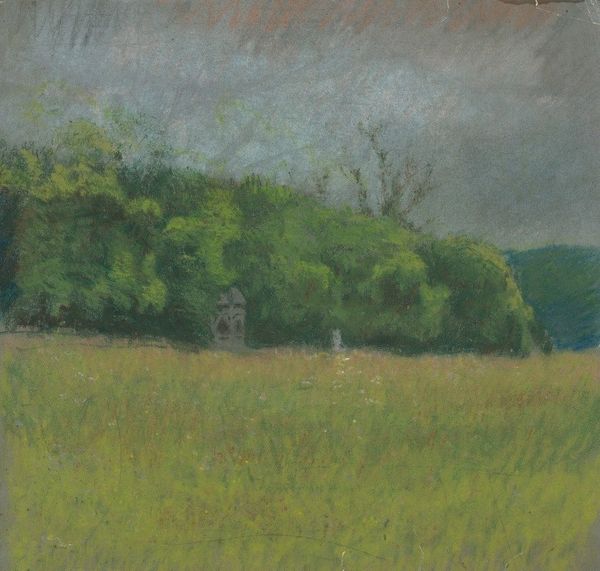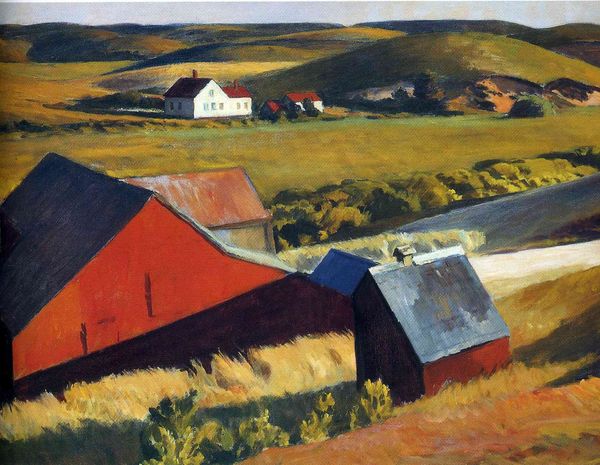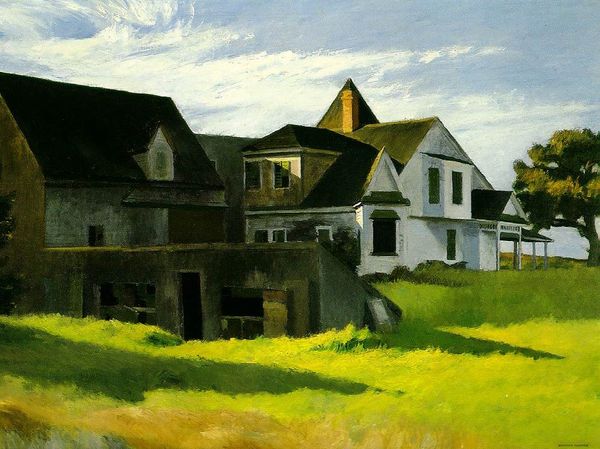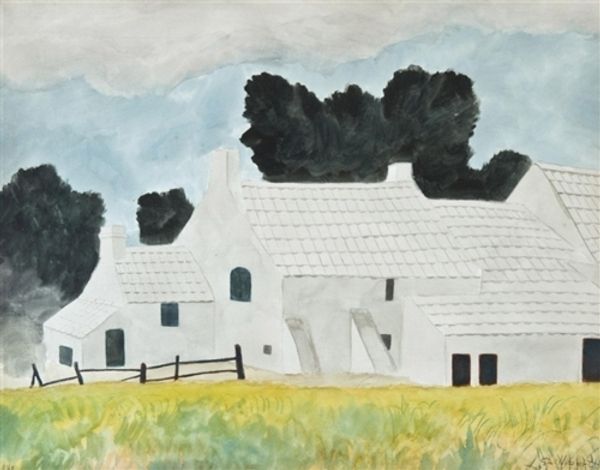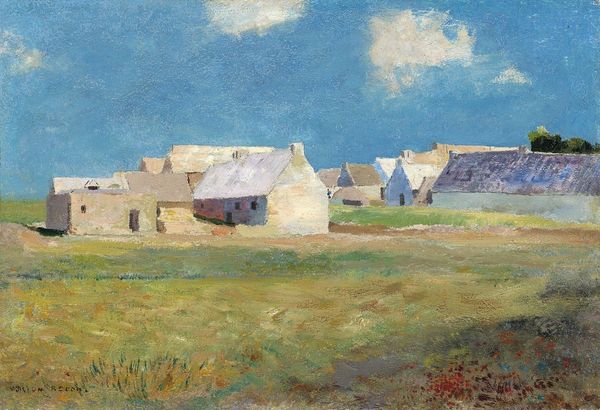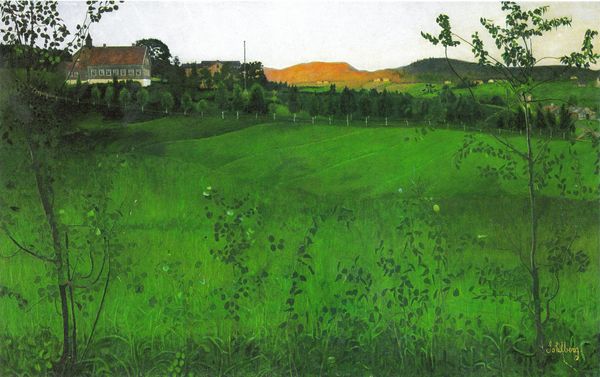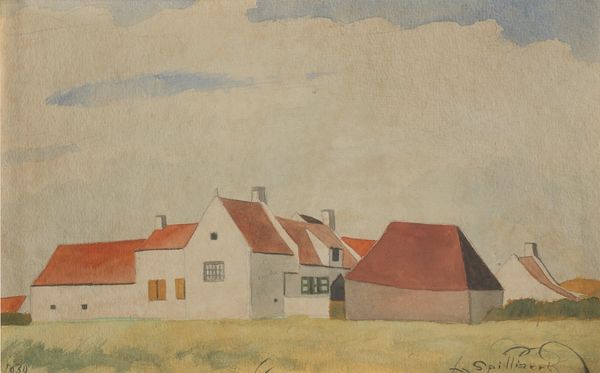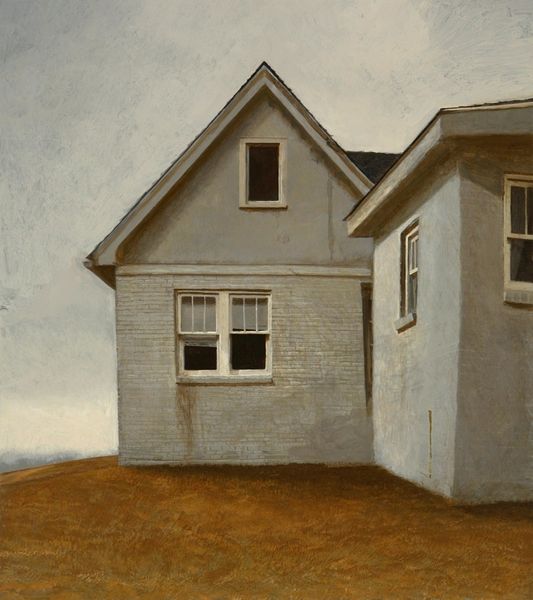
painting, plein-air, oil-paint
#
painting
#
plein-air
#
oil-paint
#
landscape
#
oil painting
#
modernism
#
realism
Copyright: Fairfield Porter,Fair Use
Curator: Fairfield Porter's "Wheat," painted in 1960, strikes me immediately with its somber beauty. A white house sits nestled amidst foliage under an expansive grey sky above the titular wheat field. There's a stillness, a certain quietude in its simplicity. What's your initial reaction? Editor: The composition feels deliberately weighted, doesn't it? The oppressive sky almost seems to push down on the fragile architecture below. Given its period, I’m compelled to ask: how can we consider the environmental and agricultural shifts impacting rural communities reflected within such seeming innocence? Curator: I can't help but see a certain peace, a sanctuary almost. The strokes are so simple and direct, aren't they? Porter really understood how to capture light with these understated, almost humble colors. Did he mean to depict such weighty concepts, or did he intend to illustrate the beauty of these rural environments? Editor: Porter did seem drawn to those ordinary moments. Still, placing "Wheat" within a modernist lens means we cannot dismiss the broader socioeconomic climate shaping rural experiences at mid-century. These landscapes weren’t immune to broader issues of access, identity, and land. Did it ever feel burdened by these political concepts, given its serene style? Curator: Not really. To me, Porter distills something fundamental about American life through the interplay between nature and human construction. The colors might be muted, but the emotional impact is resonant, almost like a melody you can't quite place. Perhaps the real subject isn't wheat, or buildings, but an intangible feeling. It is through the harmony of light, shape, color, and texture that something meaningful about an authentic, everyday life is conveyed. Editor: True enough. And perhaps recognizing both Porter's intuitive artistry, and the complexities behind even seemingly simple landscapes allows us to draw relevant connections between the canvas and ourselves. Ultimately, we must keep questioning how land, home, and harvest intersect on the human experience. Curator: What a fantastic perspective, a reminder that art, like life, contains layers if we're willing to look beyond the surface!
Comments
No comments
Be the first to comment and join the conversation on the ultimate creative platform.
